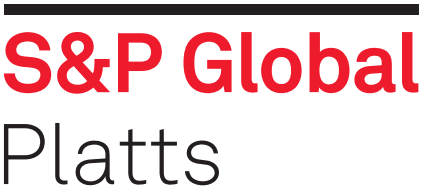
Analysts’ forecasts of Russian 2020 steel demand vary between flat and a drop of 10% and forecasts for non-ferrous metals demand are difficult to pin down because of the ever-changing impact of the coronavirus pandemic.
Following the 20%-25% drop in the ruble against the dollar over the last four to five weeks, Russian metals companies have become interested in ramping up exports to maximize foreign currency revenue. However, Europe, an important market for Russian commodities, has been hit hard by coronavirus, and the stringent quarantine measures put in place to curtail its spread have stalled trade.
In 2020, Russia may maintain stable steel production if producers succeed in growing exports despite the current period of contracting global demand, but in the worst-case scenario domestic, ferrous-metal consumption may drop by 10% from 2019, the year when household incomes rose for the first time and mortgage rates fell to their lowest in half a decade, Kirill Chuyko of Moscow-based BCS Investment Group said.
Depending on the extent of the virus’ spread in Russia and elsewhere, its steel demand may remain flat or, more likely, fall several percent this year, Andrey Lobazov at Moscow investment company Aton said. “Demand for steel is less susceptible to the shackles of COVID-19, the oil price crash and ruble depreciation than demand for non-ferrous metals, which may respond to the same challenges with greater volatility. Most steel is used in construction, an industry more resilient to swings in consumer demand and activity than automotive or jewellery,” the analyst said.
Analysts at Moscow-based investment bank Uralsib even reckon the ruble’s depreciation may lead to a short-term upswing in real estate demand as was the case in 2014, only the cycle of ruble interest rate cuts is over and will no longer support the mortgage market.
This year, global demand for non-ferrous metals will either decrease or grow at a much slower pace to the disadvantage of Russian non-ferrous metals producers because the bulk of their output is exported. For instance, Nornickel exports up to 95% of its products and Rusal 80%.
The coronavirus pandemic has already affected a few economies whose demand for steel and steelmaking raw materials is shrinking, while the slowdown in the infrastructure, power and automotive industries is going to reduce the uptake of copper, nickel and palladium, although Nornickel and Rusal can mitigate the impact on their cash flows by reducing investment and dividends, Uralsib said.
Nornickel, for example, has just announced the cancelation of its Arctic Palladium joint venture, saying it was vetoed by Rusal, which holds a stake in Nornickel. Analysts said another significant reason behind the cancelation could be Nornickel’s unwillingness to take on vast investment commitments in such uncertain times.
No doubt, primary aluminium demand growth is being affected by the global downturn in manufacturing, Rusal’s spokeswoman told S&P Global Platts.
Two weeks ago, Rusal expected 2020 global demand for aluminum to grow 1.3% to 66.1 million mt with 28.8 million mt to be consumed outside China (up 1.1%). Given the current context, this forecast was deemed out of date, but the impact of the coronavirus on demand was still being assessed and would depend on the duration of the outbreak, the spokeswoman said.
Long-term growth drivers were still there and would not be wiped out by the pandemic. Aluminum remained a metal of choice for lightweight solutions in the automotive sector. Its applications were growing in other industries too, including packaging, electrical and construction, and end-user demand, currently suppressed, was expected to stage a rapid recovery once the situation normalized, she said.
Russian metals companies are refraining from giving precise estimates as to how they see demand and production being affected this year, but forecasts for Russian GDP might offer a clue.
Lower oil prices and the corona virus pandemic will mean zero growth in the Russian economy this year, according to Uralsib analysts; they also expect a decrease in disposable household incomes. Household incomes are likely to shrink 0.5% after a 0.8% uptick in 2019. This will negate the effect of higher safety-net expenditure the government has committed to in the face of pandemic spreading over to Russia and affect personal consumption spending. The latter is one of the main economic growth drivers, along with government investment in fixed assets, both decisive for metal-intensive goods demand.
Uralsib remains somewhat upbeat on government spending, saying that despite oil price crash and highly turbulent markets, the government will not abandon plans to implement National Projects — a seven-year investment program worth Rb25.725 trillion ($326 billion) with 70% of this provided by the state. This year, government spending will ensure a 1.9% growth in capital investment (compared with1.7% in 2019) but will be offset by a reduction in private-sector investment, the bank said.
So far, this year’s targets within the National Projects scheme look unattainable. Only 13% of work that should have been financed in January-February was actually financed. The targets need to be revised by the government, said Alexei Kudrin, the chairman of the Russian Accounting Chamber, according to media reports and his own website.
— Ekaterina Bouckley




